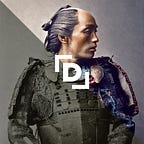Some End of the Year Nonsense.
Wait, what?
Predictably, the end of the year for many is a time for reflection and having an enforced period of inactivity due to illness in December has given me a chance to pause at the inevitable end of year rush.
I originally trained as an architect and if you had told me several years ago I’d end up doing the work Dynamichrome, I would’ve laughed. As with so many professions though, many people fall into theirs by accident, and in a way I am no exception, but the path taken has been a profound experience, both professionally and personally.
The great thing about an architectural education is that it covers an extremely broad knowledge base, and you’re expected to know a little about just about everything, and master one or two particular disciplines within an extremely wide spectrum of interests. One thing I am only beginning to appreciate is actually how disproportionately wonderful attempting to master a particular craft is, and I am thankful to have read Cal Newport’s excellent book So Good They Can’t Ignore You: Why Skills Trump Passion in the Quest for Work You Love, an inspiring primer on how to realistically navigate your way through through becoming world class at a particular skill set.
In the spirit of utter dedication to the craft, I recently re-watched the documentarty Jiro Dreams of Sushi. As with any important revelation, the message seems to appear again and again. For all of its sushi-porn, Jiro is really a documentary about the kind of mindset you need to dedicate yourself to a particular thing and let the results take care of themselves. Here’s a video of my favourite bit in the film:
Three or four months making the same Tamagoyaki over and over again before grudgingly gaining the approval of Jiro. This phrase he uses — Shokunin — has become enshrined in Dynamichrome’s DNA over the last year. But what is it?
The Japanese word shokunin is defined by both Japanese and Japanese-English dictionaries as ‘craftsman’ or ‘artisan,’ but such a literal description does not fully express the deeper meaning. The Japanese apprentice is taught that shokunin means not only having technical skills, but also implies an attitude and social consciousness. … The shokunin has a social obligation to work their best for the general welfare of the people. This obligation is both spiritual and material, in that no matter what it is, the shokunin’s responsibility is to fulfill the requirement.”
— Tasio Orate
We like this very much, and it’s something we will become more adept at in the realms of Digital Color Reconstruction, a craft that is enjoying a revival of sorts, a modern interpretation of a well established craft of hand-colouring photographs, one of the earliest forms of photographic manipulation. In 1880s Japan, it was called shashin abura-e (写真油絵) — photographic oil paintings — and no doubt pracitioners such as Yokoyama Matsusaburō were living embodiments of the Shokunin mentality.
No doubt, we will be pursuing the craft as far as we can throughout the upcoming year, and all things being well, 2016 is shaping up to be an extremely busy year for us. More on that in the coming weeks and time’s running short here so I’ll save future plans for future posts, but inbetween the myriad of amazing projects we’re working on, we are endeavouring to consolidate Dynamichrome’s entire public archive so far by the end of the next year here on @medium — a fantastic platform for what we hope is good content.
It just leaves me to thank all of you for taking the time to read and engage with us — We hope Dynamichrome’s scope becomes much wider over the coming year, and I certainly look forward to sharing some great content.
Happy New Year to you all.
— Jordan
Director, Dynamichrome
